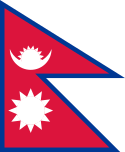Piłka siatkowa na Igrzyskach Azjatyckich 2018
 | |||
| Igrzyska Azjatyckie 2018 Dżakarta | |||
| |||
| Miejsce | Gelora Bung Karno Sports Complex, Bulungan Sport Hall | ||
|---|---|---|---|
| Data | 19 sierpnia – 1 września | ||
| Liczba konkurencji | 2 | ||
| Liczba zawodników | 456 | ||
Piłka siatkowa na Igrzyskach Azjatyckich 2018 – jedna z dyscyplin rozgrywana podczas igrzysk azjatyckich w Dżakarcie i Palembangu. Zawody odbyły się w dniach 19 sierpnia – 1 września w dwóch halach. Do rywalizacji w dwóch konkurencjach przystąpiło 456 zawodników z 21 państw[1].
Uczestnicy
W zawodach wzięło udział 456 zawodników z 21 państw[2].
| Reprezentacja | Liczba zawodników |
|---|---|
| 16 | |
| 28 | |
| 28 | |
| 15 | |
| 30 | |
| 28 | |
| 28 | |
| 14 | |
| 28 | |
| 16 | |
| 32 | |
| 14 | |
| 28 | |
| 29 | |
| 14 | |
| 13 | |
| 13 | |
| 14 | |
| 14 | |
| 28 | |
| 26 | |
| 21 reprezentacji | 456 |
Medaliści
| Konkurencja | Złoto | Srebro | Brąz | |
|---|---|---|---|---|
| Turniej mężczyzn | Milad Ebadipour Gharahassanlou Saman Faezi Farhad Ghaemi Amir Ghafour Mohammadreza Hazratpourtalatappeh Saber Kazemi Mohammadjavad Manavinejad Mahdi Marandi Mirsaeid Marouflakrani Seyedmohammad Mousavieraghi Ali Shafiei Morteza Sharifi Amir Hossein Toukhteh Mohammadtaher Vadi | Bu Yong-chan Choi Min-ho Han Sun-soo Jeon Kwan-gin Jeong Min-su Jung Ji-seok Kim Jae-hwi Kim Kyu-min Kwak Seung-suk Lee Ming-yu Moon Sung-min Na Gyeong-bok Seo Jae-duck Song Myung-geun | Chen Chien-chen Hsu Mei-chung Huang Chien-feng Huang Shih-hao Li Chia-hsuan Lin Cheng-yang Lin Yi-huei Liu Hong-jie Liu Hung-min Shih Hsiu-chih Su Hou-chen Tai Ju-chien Wang Chien-pin Wu Tsung-hsuan | [3] |
| Turniej kobiet | Diao Linyu Ding Xia Duan Fang Gong Xiangyu Hu Mingyuan Li Yingying Lin Li Liu Xiaotong Wang Mengjie Yan Ni Yao Di Yuan Xinyue Zeng Chunlei Zhu Ting | Wilavan Apinyapong Hattaya Bamrungsuk Pornpun Guedpard Chitaporn Kamlangmak Malika Kanthong Pimpichaya Kokram Ajcharaporn Kongyot Chatchu-on Moksri Thatdao Nuekjang Supattra Pairoj Piyanut Pannoy Onuma Sittirak Pleumjit Thinkaow Nootsara Tomkom | Hwang Min-kyoung Jung Ho-young Kang So-hwi Kim Su-ji Kim Yeon-koung Lee Da-yeong Lee Hyo-hee Lee Jae-yeong Lee Ju-ah Na Hyun-jung Park Eun-jin Park Jeong-ah Yang Hyo-jin Yim Myung-ok | [4] |
Tabela medalowa
| Pozycja | Reprezentacja | Złoto | Srebro | Brąz | Razem |
|---|---|---|---|---|---|
| 1. | 1 | 0 | 0 | 1 | |
| 1 | 0 | 0 | 1 | ||
| 3. | 0 | 1 | 1 | 2 | |
| 4. | 0 | 1 | 0 | 1 | |
| 5. | 0 | 0 | 1 | 1 | |
| Razem | 2 | 2 | 2 | 6 | |
Linki zewnętrzne
- Piłka siatkowa na stronie igrzysk azjatyckich. en.asiangames2018.id. [zarchiwizowane z tego adresu (2018-08-13)]. (ang.)
Przypisy
- ↑ Sport Technical Handbook (ang.). Asian Games 2018. [dostęp 2018-09-17]. [zarchiwizowane z tego adresu (2018-08-13)].
- ↑ Athletes (ang.). Asian Games 2018. [dostęp 2018-09-17].
- ↑ Men's Tournament (ang.). Asian Games 2018. [dostęp 2018-09-17].
- ↑ Women's Tournament (ang.). Asian Games 2018. [dostęp 2018-09-17].
Media użyte na tej stronie
Pictograms of Olympic sports - Volleyball (indoor). This is unofficial sample picture. Images of official Olympic pictograms for 1948 Summer Olympics and all Summer Olympics since 1964 can be found in corresponding Official Reports.
Autor: https://phabricator.wikimedia.org/diffusion/GOJU/browse/master/AUTHORS.txt, Licencja: MIT
An icon from the OOjs UI MediaWiki lib.
Autor: https://phabricator.wikimedia.org/diffusion/GOJU/browse/master/AUTHORS.txt, Licencja: MIT
An icon from the OOjs UI MediaWiki lib.
Chinese Taipei Olympic Flag. According to the official website of Chinese Taipei Olympic Committee, Blue Sky(circle) & White Sun(triangles) above the Olympic rings is neither the National Emblem of the Republic of China, nor the Party Emblem of Kuomintang (KMT), but a design in between, where the triangles do not extend to the edge of the blue circle, as registered at International Olympic Committee in 1981 and digitally rendered in 2013. Besides, the blue outline of the five-petaled plum blossom is broader than the red one. Moreover, the CMYK code of the blue one and the Blue Sky & White Sun is "C100-M100-Y0-K0", and different from the Olympic rings (C100-M25-Y0-K0). Note that it's the only version recognized by IOC.
The Flag of India. The colours are saffron, white and green. The navy blue wheel in the center of the flag has a diameter approximately the width of the white band and is called Ashoka's Dharma Chakra, with 24 spokes (after Ashoka, the Great). Each spoke depicts one hour of the day, portraying the prevalence of righteousness all 24 hours of it.
bendera Indonesia
Flag of Maldives. The colours used are Pantone 186 C for red and Pantone 348 C for green.
The national flag of Kingdom of Thailand since September 2017; there are total of 3 colours:
- Red represents the blood spilt to protect Thailand’s independence and often more simply described as representing the nation.
- White represents the religion of Buddhism, the predominant religion of the nation
- Blue represents the monarchy of the nation, which is recognised as the centre of Thai hearts.





















